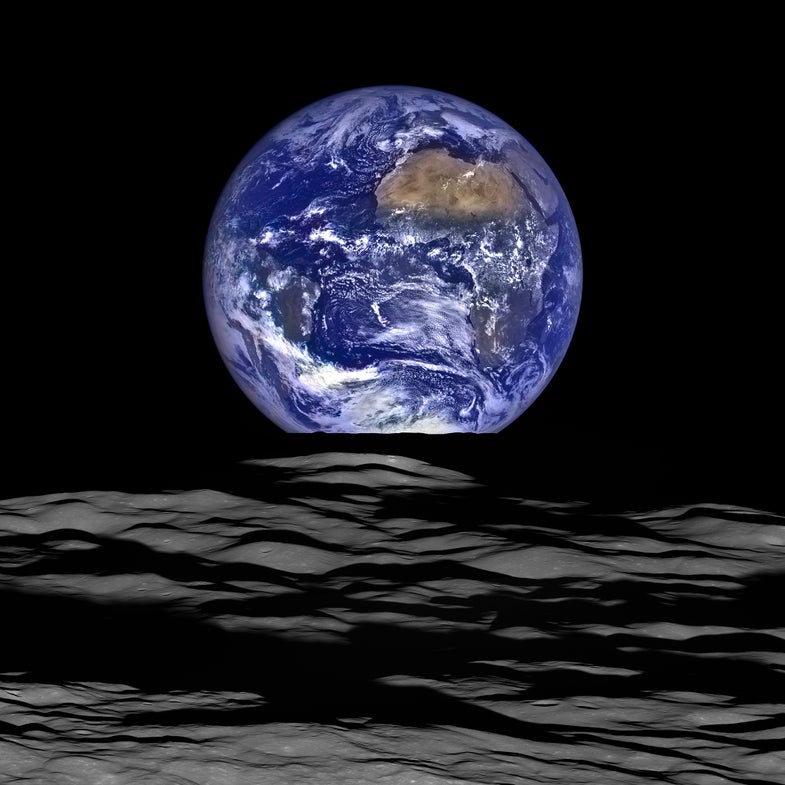NASA Releases New High-Res Earthrise Image
See our planet from the moon's point of view

NASA’s Lunar Reconnaissance Orbiter is orbiting the moon, and as such gets a particularly nice view of the glowing blue dot we call home. And now, we get to ogle it as well, thanks to a new high-res image released by NASA. The composite image was taken on October 12 using two different cameras: a black and white high-res Narrow Angle Camera (NAC), and a lower-resolution color Wide Angle Camera (WAC). The NAC gets the nice detail, and of course the WAC offers the vibrant colors.
But it isn’t just as simple as snapping two photos. NASA says the LRO spacecraft first has to be rolled to the side, and then turned to get the widest lunar horizon for the NAC. Add to that the fact that LRO is traveling 3,580 miles per hour. Then, the images are processed to adjust for the motion of the Earth and the moon.
In this particular shot, you can see the moon’s crater Compton in the foreground and the continent of Africa prominently displayed. NASA likens this new image to one taken by Apollo Astronaut Harrison Schmitt. He took the image known as Blue Marble on December 7, 1972.
You can reminisce over previous “Earthrise” photos from NASA, with the first taken in 1966, and check out some vintage artist interpretations of the image. Though, it is important to note, the Earth is not actually rising and setting from the moon’s vantage point. As Mark Robinson of Arizona State University in Tempe, principal investigator for Lunar Reconnaissance Orbiter Camera, says in NASA’s announcement post, “the Earth may not move across the ‘sky’, but the view is not static. Future astronauts will see the continents rotate in and out of view and the ever-changing pattern of clouds will always catch one’s eye, at least on the nearside.”